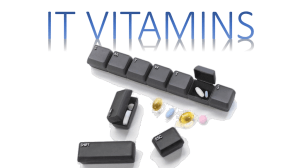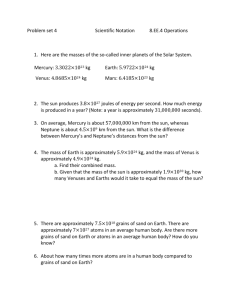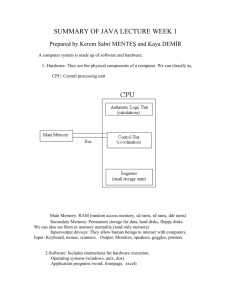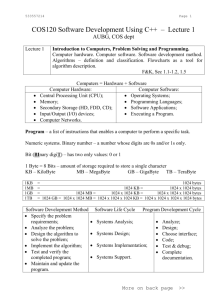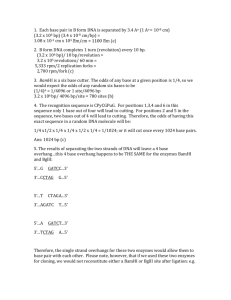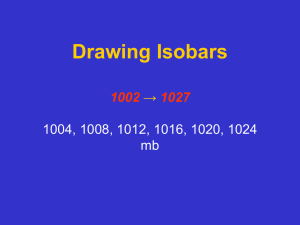The Radiance rtcontrib Program
advertisement
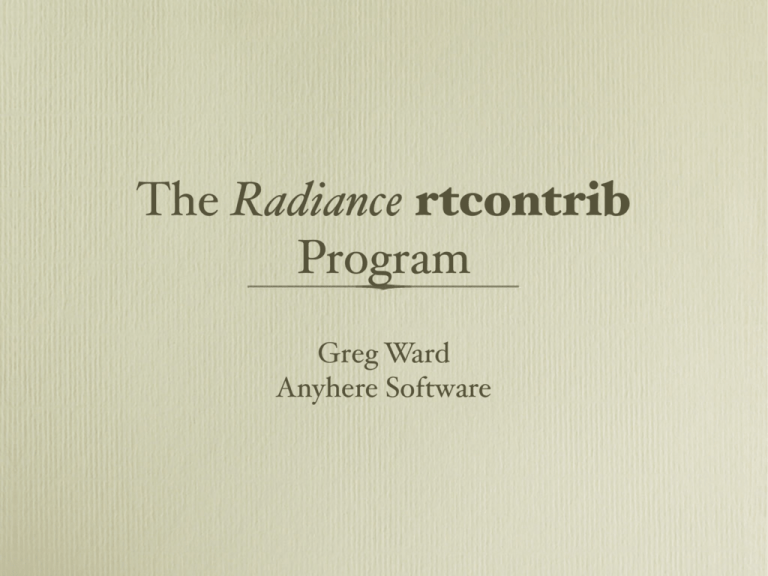
The Radiance rtcontrib Program Greg Ward Anyhere Software Quantify Contributions Q: How much came from each light bank? Background • Core Radiance rendering routines recursively evaluate radiance, hence the name • Potentially useful information about where light originates is lost during this process • Prior to version 3.7, there were two solutions: • Repeat rendering for each source (costly) • Switch to Daysim (daylight coefficients only) Method • New member in RAY structure for storing current ray coefficient (3 floats for RGB) • Minor change to evaluation ordering in Radiance rendering routines • Function for multiplying ray coefficients back to the root of the tree (i.e., the PRIMARY ray) • Improvement to -aa 0 speed & accuracy • New ‘T’ and ‘W’ options for rtrace -o Example Code Change Contribution Coefficients • A “contribution coefficient” is the fraction of a ray’s return value that will ultimately apply • This is closely related, but not equal, to the “ray weight” reported by -otw • ‘T’ option for rtrace -o traces to light sources • The ‘W’ option reports contribution coefficient A Simple Example Eye Src -oTW=0.03*0.40Ω2 -oTW=0.25Ω1 -oTW=1.0 -oTW=0.03 Diffuse=25% Specular=3% Diffuse=40% Specular=0 Problem: Daughter Rays Diffuse Interreflections Solution: Gather Rays • Need a general method to gather contribution coefficients and sum them together • Different applications require different sums: • Daylight coefficients sum at sky patches • Luminaire model may sum at lamp surface • How do we do it all? Enter rtcontrib • Manage the calculation of ray contribution coefficients by rtrace • Gather contributions for use in linear light combinations (e.g., daylight coefficients) • Facilitate analysis of optical systems such as light pipes and luminaires • Provide flexible output (ASCII and binary data as well as Radiance pictures) General Operation • User specifies rtrace options and octree • User tells rtcontrib where to collect values • required modifier name(s) • optional bin number based on ray direction and intersection point • Output sent to one or more files or commands • specified by modifier name and bin number Lighting Example vwrays -ff -x 1024 -y 1024 -vf model.vp \ | rtcontrib -o part_%s.pic -m fluor1 -m fluor2 \ -ffc `vwrays -d -x 1024 -y 1024 -vf model.vp` -u+ model.oct part_fluor1.pic part_fluor2.pic rtcontrib Options General options: -n N start N rtrace processes -r recover previously aborted calculation -e expr compile definitions string Used by -b } -f source compile definitions file Modifier options: -o ospec output specification May contain ‘!’ and ‘%d’ or ‘%s’ Integer expression, or ‘0’ to disable -b binv bin number Modifier specification: -m mod modifier name -M file modifier list from file Lighting Example Dissection vwrays -ff -x 1024 -y 1024 -vf model.vp \ | rtcontrib -o part_%s.pic -m fluor1 -m fluor2 \ -ffc `vwrays -d -x 1024 -y 1024 -vf model.vp` -u+ model.oct Lighting Example Dissection vwrays provides primary ray origins and directions (in floating point) for pictures to be generated by rtcontrib vwrays -ff -x 1024 -y 1024 -vf model.vp \ | rtcontrib -o part_%s.pic -m fluor1 -m fluor2 \ -ffc `vwrays -d -x 1024 -y 1024 -vf model.vp` -u+ model.oct Second invocation reports actual resolution (-x 1024 -y 690) Lighting Example Dissection Specifies output files and associated modifiers, creating part_fluor1.pic and part_fluor2.pic. vwrays -ff -x 1024 -y 1024 -vf model.vp \ | rtcontrib -o part_%s.pic -m fluor1 -m fluor2 \ -ffc `vwrays -d -x 1024 -y 1024 -vf model.vp` -u+ model.oct The -ffc option is an rtrace option telling rtcontrib to expect single-precision floats on input and produce RGBE colors on output. The -u+ option specifies pure Monte Carlo sampling. Daylight Coefficients Discrete solar positions at each patch location improve rendering of sharp shadow features. Actual sun position is interpolated from four closest suns. From John Mardaljevic’s thesis Daylight Coefficient Example Blinds: up, top, down @ 10° increments Optional overhang Upper & lower glass: 42 separate runs of 146 sky patches & 145 solar patches One hemispherical fisheye view Example Contributions (1) Sky patch 045 from lower glass no overhang no blinds Sun patch 045 from lower glass no overhang no blinds Example Contributions (2) Sky patch 045 from lower glass with overhang blinds @ 20° Sun patch 045 from lower glass with overhang blinds @ 20° Combined Result Dec 28 Overhang 10 am blinds down @ 10° Future Work • I hope to be working in the future • Apply rtcontrib to optical problems • BTDF simulations • Luminaires, light pipes, etc. • Integrate with energy simulation tools
